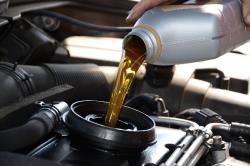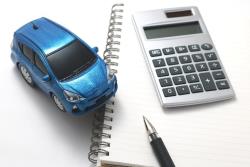| Many modern vehicles are designed to be capable of operating for 200,000 miles or more—but how can you give your car the best chance of getting there? Whether you’re looking to drive your car for the next few years—or for the rest of its natural life—following a few basic tips can help reduce maintenance issues, maintain re-sale value, and even add years of operating life. CLEAN YOUR ENGINE 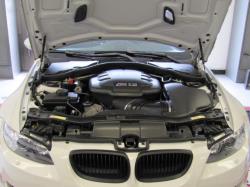
Clean the exterior of your engine annually to prevent overheating | Keeping the exterior of your engine clean can help you spot leaks before they become serious. Layers of dirt and engine bay grime can hide drips, and can even create an unintentional coating of insulation that can result in your engine running hot—leading to engine damage. Excess crud can also cause corrosion, dramatically shortening your engine’s working lifespan. If you feel like giving it a go yourself, there are plenty of options for engine cleaning/degreasing products on the market, or you can hire a professional. Try to schedule a thorough cleaning at least once yearly.KEEP YOUR KEYS LIGHT 
To avoid damaging your ignition, limit the number of items on your keyring | A heavy keychain can wear out the tumblers in your ignition over time, and can sometimes cause enough damage to prevent your key from engaging the ignition—resulting in an expensive call to a locksmith. Decorative keychains, flashlights, and bottle openers can all add weight to your keyring—so either keep your ignition key separate, or downsize your keyring as much as possible.TRACK YOUR SERVICE SCHEDULEFamiliarize yourself with your owner’s manual, and take note of the manufacturer’s recommended service schedule. Keep a small notebook in your glove box to take note of any services or repairs—including oil changes, fluid checks, tire rotations, and gas mileage. Sticking to the recommended service schedule will help keep your vehicle running smoothly, and if you decide to sell, buyers will appreciate evidence that you’ve performed consistent maintenance. CHECK YOUR TIRES FOR INFLATION AND WEAR 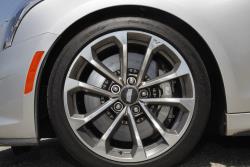
Tires should typically be rotated every five to ten thousand miles | Your owner’s manual will likely include the recommended interval for tire rotations—typically every 5,000 to 10,000 miles. Regular rotations help the tires wear evenly over their lifespan, particularly if you have a front-wheel drive vehicle, and can prevent front-end misalignment. You also want to ensure that your tires are inflated to the recommended levels; underinflated tires can cause tread wear and reduce gas mileage, while overinflated tires can result in a loss of traction while also causing premature wear.REPLACE YOUR AIR FILTER 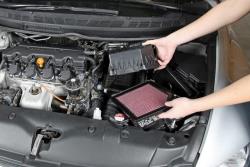
K&N High-Flow Air Filters are specially designed to provide your engine with increased performance | Your engine air filter protects your engine from contaminants that can cause damage—and is a sometimes-overlooked aspect of necessary regular maintenance. If you choose a disposable filter, it typically needs to be replaced every 15,000 miles or so. K&N High-Flow Air Filters are washable and reusable, and are designed to last for the entire life of your vehicle—so you can enjoy the convenience of only servicing your filter every 50,000 miles under normal highway driving conditions.BUY GOOD GAS
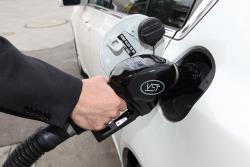
Make sure you’re filling up with high-quality gasoline | Fuel companies add EPA-approved additives and detergents to their fuel in order to prevent the build-up of carbon deposits that can degrade your engine’s performance. To ensure you’re providing your engine with clean gas, look for Top Tier™ gasoline—a designation that ensures companies are exceeding the minimum additive standard. Preventing fuel build-up can extend the life of your engine dramatically! CHANGE YOUR OIL AND OIL FILTER REGULARLYYour oil filter should typically be swapped out at least every other oil change, though changing it every time is ideal. Oil filters contain almost a quart of oil, which—if dirty—can contaminate your freshly changed, clean oil. Many late model car manufacturers recommend long service intervals of 5,000-10,000 miles, so be sure you are using a high-quality oil filter that can go the distance. K&N Performance Gold® oil filters are made with a heavy-duty canister and premium filter media to hold up to the demands of extended use. Always use the oil viscosity grade that your vehicle’s manufacturer recommends—which may vary according to the season.DON’T NEGLECT FLUID LEVELSDon’t neglect other fluids—your transmission fluid, radiator coolant, brake fluid, and power steering fluid all require periodic servicing and replacement according to your manufacturer’s recommended service schedule. It’s a good idea to check all your fluids regularly to help catch any leaks or problems early. 
Following your vehicle’s recommended service schedule will help keep you on the road longer | KEEP YOUR CAR CLEANKeeping your car clean is an important aspect of maintaining your car’s paint job and body. Salt, in particular, can cause serious rust damage and corrosion—which can eventually creep into the structural components of your vehicle, resulting in thousands of dollars of damage. Wash your car regularly, and if you live in an area where it's frequently exposed to salt—near the beach, or where roads are salted in winter—make sure to give your vehicle’s undercarriage a thorough cleaning with each wash. PAY ATTENTIONBe aware of new sounds and vibrations. Every couple of weeks, take a minute to roll down your windows as you’re driving around town, and listen for anything out of the ordinary. Squeaks, rattles, and knocks should be investigated and diagnosed. Sound can be one of the first indicators of a problem, and if you catch issues early, you can avoid more serious repairs in the future. BE PATIENT WITH COLD STARTSIf you let your car sit for more than five hours, you can consider the engine cold—with most of the oil drained into the oil pan. It takes a few seconds after start-up for oil to start circulating through the engine again—meaning you shouldn’t immediately start up and drive off, particularly in cold weather when the oil is more viscous (and moves slower!). Give the engine around 30 seconds to warm up before putting it in gear. BUDGET FOR REPAIRSUnexpected car repairs can cause your budget to take a serious hit—which is why it’s important to plan ahead for unforeseen problems in addition to your regular service costs. Setting aside a vehicle-specific emergency fund can help you deal with costly repairs and prevent unnecessary financial stress. If possible, estimate your yearly vehicle costs—including services like oil changes, fluid checks, filter replacements, and tire rotations—and set aside a bit extra for any unwelcome surprises. Check out performance parts to help extend the life of your specific vehicle at www.knfilters.com.
|






